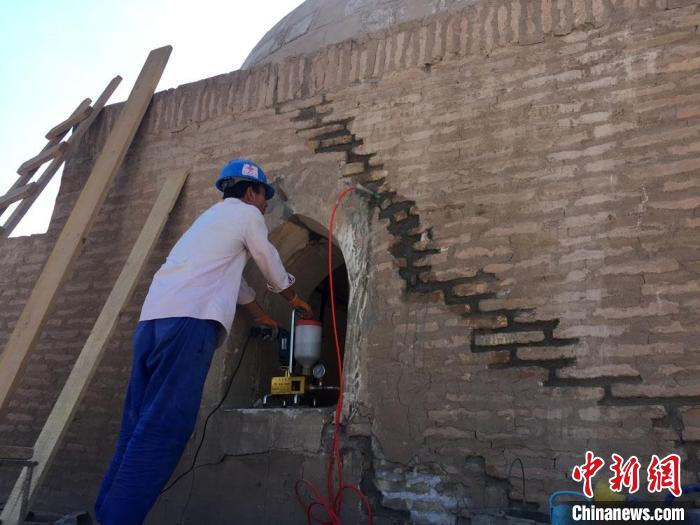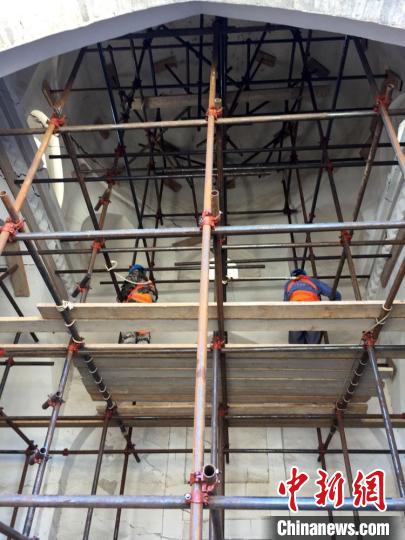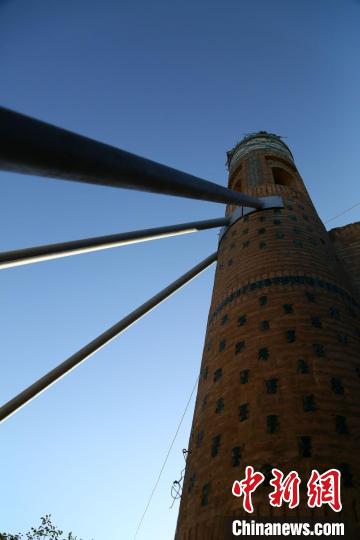




- BRNN
- BRI News
- BRNN News
- Database
Official Documents Polices and Regulations
Inter-government Documents International Cooperation BRI Countries
Business Guide Economic Data BRI Data
Trade
Investment Projects Latest projects
Cases - Content Pool
Located in the Xorazm region of Uzbekistan, the ancient city of Khiva has been an important town along the Silk Road since the 4th century. Being the first cultural heritage site in Uzbekistan to be inscribed in the UNESCO World Heritage Site list, the ancient city has a long history and vibrant culture.

File photo shows a panoramic view of Uzbekistan's ancient city of Khiva, where a restoration project is underway. (Photo/Zhou Peng)
There are dozens of heritage sites inside Khiva, and some of them are in need of restoration. As an important cultural cooperation project between China and Uzbekistan under the framework of the Belt and Road Initiative (BRI), the restoration of the historical and cultural heritage sites inside Khiva have been undertaken by the cultural heritage protection center under the China Railway Northwest Research Institute Co. Ltd.
The China Railway Northwest Research Institute Co. Ltd. sent a professional cultural relic restoration team to Khiva to check on the condition of the ancient city, collecting various kinds of information about the ancient buildings by mapping and surveying, sampling, and solving difficulties regarding restoration.
The Chinese engineers found that the leakage of surface water, structural deformations and other factors have caused various degrees of sinking among the buildings, which has led to slanted walls and cracks on the domes of the mosque and theology school inside the ancient city.

A worker repairs a wall of an ancient building inside the ancient city of Khiva, Uzbekistan. (Photo/Zhou Peng)
Since the mosque and the theology school inside Khiva were initially built by adopting unique engineering methods using special materials and construction techniques, and also because the restoration projects are different from each other, the Chinese engineers have tailored protection plans by developing new crafts and restoration methods, constantly improving the protection plans throughout the restoration process.
The Chinese engineers have also adopted a minimal intervention concept during the restoration of ancient buildings, reinforcing and repairing them through the use of sophisticated restoration technologies to ensure their structural integrity and safety, thereby preserving the historical value of the heritage sites.

File photo shows a site of the restoration project inside the ancient city of Khiva, Uzbekistan. (Photo/Zhou Peng)
The ancient city of Khiva has been destroyed over 40 times in history, and it is the construction of the BRI that has given a new life to the ancient city. The restoration project has not only brought new luster to the cultural heritage, but also has become a demonstration project of cooperation on the protection of mankind's cultural heritage sites along the Silk Road.

File photo shows a site of the restoration project inside the ancient city of Khiva, Uzbekistan. (Photo/Zhou Peng)

Tel:86-10-65368972, 86-10-65369967